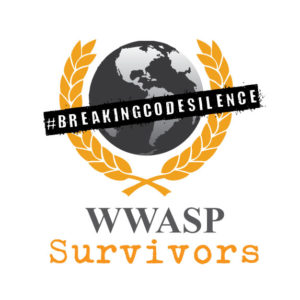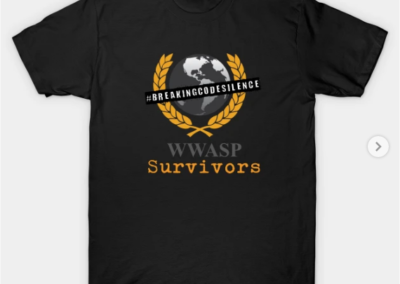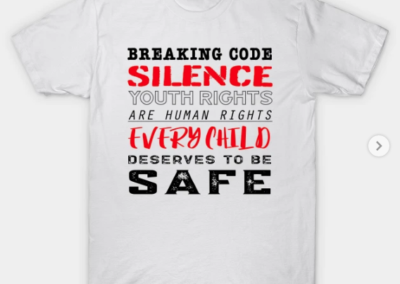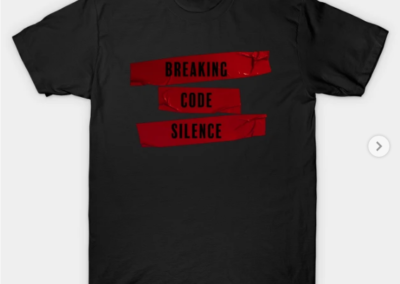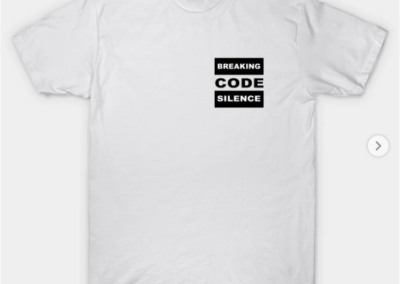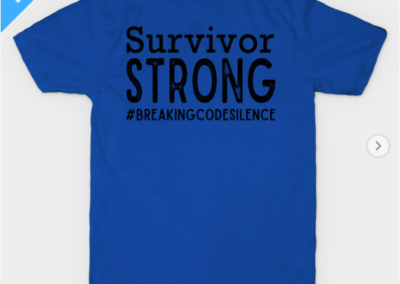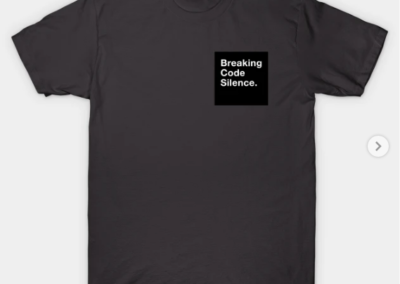In this post, we will examine the expert testimony of Dr Anna Salter. She specializes in forensic psychology – particularly sexual abuse, physical abuse and violent offending. She has a Bachelor’s in Philosophy from the University of North Carolina, a Master’s in Child Study from Tuft’s University, and a Ph.D in Clinical Psychology and Public Practice from Harvard. In her work experience, she’s been working with offenders since the 1980s.
The link to the full testimony will be below the highlights.
Dr Salter testified that “delayed disclosure” was the norm when it came to abuse victims. She also talks about how sometimes their emotions act as a pressure cooker until they can’t take anymore. They’ll sometimes become suicidal much like the sexual abuse victim became. This includes the Boston Marathon analogy which Ben Trane’s new lawyer states is extremely prejudicial. One can read it and make a judgement for themselves on whether or not they really think it would have prejudiced the jury and caused them to convict him based on this.
Q. Dr. Salter, could you explain to us what the phrase “delayed disclosure” means?
A. It means that a child who discloses sexual abuse, it means that they did not disclose immediately.
Q. Why wouldn’t a child disclose immediately if they had been sexually abused?
A. Well, there are a lot of different pieces of research and a lot of different reasons why kids don’t disclose immediately. But the fact is that kids don’t disclose immediately. We can start with that.
A 2005 study by London looked at– or an article review–10 different retrospective studies of child sexual abuse. These were studies in which they asked adults if they’ve been sexually abused as children. And then they asked them whether they had told or not as a child. Across 10 studies, 32 percent of them told anybody as children, anybody. And most of the ones who told somebody told a confidant or a friend and asked them to keep it confidential. Only between 6 and 18 percent of child sexual abuse reports ever went to police, ever got to authorities. And at this point I have over 40 articles, probably close to 50–I want to say probably more now that I keep in notebooks on child sexual abuse disclosure. And I can’t find any articles that show the majority of children disclose immediately. The majority of children don’t disclose immediately.
Q. That’s the norm?
A. That’s actually what’s normal. I’m not saying that some kids don’t disclose immediately. Up to a third disclose in childhood, but they don’t–even those don’t necessarily disclose immediately.
Q. It seems hard to understand why a child wouldn’t come forward about that. I mean, what’s the dynamics behind that?
A. Well, there are a lot of reasons why children wouldn’t come forward. One of them is that they are afraid of the consequences. They’re afraid they will be punished. They’re afraid they’ll be blamed. They’re afraid that people won’t believe them. They don’t trust the system. Most of them don’t know anything about it, the system. They also have to go to an adult and talk about their genitals and things that they are ashamed of that happened to them that they don’t want to talk about. They worry that other kids will find out at school and make fun of them, and that has happened at times. When I train on this, I train that disclosure for most kids is a trauma, and that most kids who do disclose just want the abuse to stop. They don’t want to lose their family, if it’s a father or somebody in their family. They don’t want to be kicked out of the family. They don’t want to even have the father move. They just want it to stop. But the reality is that that isn’t what happens. A whole process has to take place. So they don’t disclose. McKelvey in 2012 in a really good article described it as a pressure cooker. He said most kids who are sexually abused, there are forces in them that want to disclose. We’re social beings. We’re social creatures. There are forces that want to tell someone, that want to get some help, that want it to stop. And then there are other forces in them that are afraid to tell. They’re ashamed; they’re afraid of what will happen to them; they’re afraid the person will be mad at them. Maybe they even care about that person and they don’t want anything bad to happen to them. So they live with this tension, this pressure cooker. And then eventually something happens that tips it and they disclose. And they only have to want to disclose 51 percent, long enough to talk to somebody, depending on who they talk to. They may talk to someone who keeps it a secret so that the abuse keeps–still keeps going on.
Q. And what do you mean by–you said this pressure cooker builds up and then something happens and they disclose?
A. Well, McKelvey’s research, some of the research shows that it’s an emotional event that happens. They get angry about something, or they get suicidal. And I’ve seen a number of cases where kids disclose when they were suicidal, or they make a suicide attempt, or there is some emotional event that happens. Now, that’s not always true. Some kids disclose when the offender starts on their sister, say, and they thought they were protecting the sister by not disclosing, by suffering through it. And then discover they’re going to start on the sister–the person is going to start on the sister anyway. So there can be a variety of reasons. But in some of the research, it’s usually an emotional moment that causes the kid to finally disclose.
Q. So with what you have just talked about with delayed disclosure, is that similar for adults as well?
A. Oh, yes. There’s research that shows that 65 percent of rape victims don’t tell anybody. So delayed disclosure isn’t a phenomena just for children. As we know from the media today, you have lots of adults coming forward who didn’t come forward at the time that something actually happened. And in some of those cases the offenders are admitting that they did it. But they didn’t disclose right away. And those adults that we’re hearing have a lot more resources and self-confidence than children and young adults have.
Q. What is counterintuitive victim behavior?
A. It’s a term we use in the field and I train on it a lot. I’ve trained on it in the San Diego Maltreatment Conference. I’ve trained on it in Boston, and I’m training at the FBI Behavioral Analysis Unit, and I think I’m going to be able to train on that particular issue among
others this spring. And it’s the idea that people expect a set of behaviors from rape victims. We expect they’re going to run away; they’re going to scream; they’re never going to see the person again. And what we find is something very different. Now, in Boston when there was the Boston Marathon, after the city reopened people went back to work. People went on with their lives. People tried to act normal. In some cases, they were pretending normal but they were trying. And the whole country labeled it Boston Strong. But when sexual abuse survivors go back about their lives; when they pretend nothing happened; when they go back to work or they act like they’re fine, then we tend to say, it didn’t happen. So we he have a double standard. It’s courageous when the terrorists–the victims of terrorism do it, but we typically think it means it didn’t happen when victims of sexual abuse do it. But you have to ask yourself, when you fall down in public, what’s your first reaction? To scramble up. It’s to say, “I’m fine; I’m fine.” “Do you need any help?” “No, no, no. I’m fine.” We’re embarrassed. We try to go back to normal as quickly as possible. So that’s what we have discovered happens with sexual assault victims, for many of them, and it results in behaviors that other people say, well, that’s counterintuitive, that doesn’t make any sense. So when the child goes to visit her grandfather again, or when the victim of date rape goes to the party with him afterwards, that’s taken as proof that it didn’t happen. That is pretty much equivalent to jumping up and when you’ve fallen, it’s very similar to that. It’s a reaction to try to get back to normal as quickly as humanly possible. Now, you do see the reaction of people screaming and running out of the room. You see it with one kind of rape. You see it with violent stranger assaults. So if someone jumps out of the bushes at you and rapes you, or tries to, then everybody’s reaction is to run away, to scream, and so forth. So you get what everybody expects, the single response that everybody thinks sexual assault survivors have. You get that to a certain kind of rape. When the rape is that kind, then what we expect victims to be like matches it. But counterintuitive behavior on the part of perpetrators produces counterintuitive behavior on the part of victims. So when perpetrators are not jumping out from the bushes, when they’re fathers or mothers or teachers or doctors or music teachers or Boy Scout leaders or your coach when you’re trying to get to the Olympics, and the next morning they come out and act like nothing happened; they tell you to do your homework or whatever; they go on like normal, kids and adults try to pretend it didn’t happen, too, and go back to normal. There is no one response to sexual assault, for children or adults. There are a variety of sexual–of responses to sexual assault. And what kind of response you get tends to have–to match what kind of assault it is.
How predators get access to their victims, groom their parents, groom the victims, and how they manipulate their way into being trusted with the victim.
Q. How is it that perpetrators get access to their victims?
A. Well, you have a few ways, general ways. First of all, often victims are in the family. If victims are in the family, then you have access. Secondly, there are–it is rare, fortunately, but you do have violent rapists, and they just simply use coercion. But the third group are the acquaintance or authority rapists. And that can be a date rapist. Serial date rapists are not uncommon. Or it can be somebody in a position of authority: a priest, a minister, a choir leader, a teacher, a doctor, somebody who already has authority over the child and status in the eyes of the parents.
Q. Does someone with that status, does that give them an easier access, a different way, to offend on someone that’s underneath them or is under their authority?
A. Much easier. Because if you’re a parent and I’m an offender, and I want to spend time with your child, you’re going to be pretty suspicious. You know, why does this adult male want to spend time with my daughter? So they have to groom you, and that’s a big–that’s a big job. But if I’m the Boy Scout leader and I’m taking your kids camping, you’re not even going to question why I want to take the kids camping. Or if I’m the music teacher, you are going to send the kid to the music teacher. So the access is much easier. You get access to time alone. If it is a situation where you have overnights– I’ve had cases with Big Brothers and Big Sisters where they actually let the tutors keep the kids overnight, which there is no reason for. But if you’re in some situation where you could get access to the kids overnight, then you have an even easier chance. I’ve had a case with Special Olympics where volunteers were allowed to take children into the Special Olympics, and they were supposed to sleep in one room, but there was an adjoining door to the room the kids were in. The offender just walked in and pulled a kid out and took him into his room while the other kids were sleeping. So overnight access is something that is a big problem for those youthserving organizations where the adult is actually able to get overnight access.
Q. You had made a comment about sometimes an offender has to groom the parents. What do you mean by that?
A. Well, if I don’t know you and I want to spend time with your daughter, I have to get you to trust me, or I have to be in a position of trust already. Even so, I’ve got to get you to believe that I’m not the kind of person who would do that kind of thing. So it’s not just a question of grooming children, it’s a question of grooming their parents as well. Because if I don’t trust you, if I’m suspicious of you, then I’m not going to give you access to my child. So the most successful sex offenders are those who have considerable social skills or high status, such as an Olympic level coach. If I think you could get my child to the Olympics, then you’ve got very high status with me. I’m not going to question the amount of time you spend alone with my child.
Q. Once they have access, what is it that you see through the research and through your experience occurs with the grooming process? Or how do you get kids to be a position where they don’t really tell?
A. Well, there are two parts. First, you have to get access to the child. If you can’t get time alone with the child, you’re not going to be able to sexually abuse them. But the next part is then you have to obtain compliance from the child. You have to get the child to tolerate sexual abuse. Now, usually, some violent offenders just use coercion. They just absolutely threaten kids, threaten to kill their families, threaten to kill their animals, and so forth. But more often you see a carrot and a stick. You see grooming, presents; you see favors; you see special favoritism. One kid on the squad gets a lot of playing time that maybe they don’t deserve. They get praise; they get told how wonderful they are, how beautiful they are, this or that and the other. And that’s–or privileges. And that’s the carrot. But it’s interesting to me how the carrot alone doesn’t–is often followed by a stick. It’s like it doesn’t work to just groom people. Then there’s the stick. And the stick is, if you don’t do this, there are threats or loss of privileges. You can’t go–you know, I’ve had fathers who say you can’t participate in sports; you can’t do any of these extracurricular activities if you don’t do what I say; you can’t ever have the car. So there’s also that punishment aspect of it, too.
Q. What is implicit coercion?
A. Implicit coercion is another name for psychological coercion. In other words, violence is explicit coercion. You hold someone down or you hit them on the head or you put something in their drink. That’s explicit. But implicit is the threats, the carrot and the stick, the manipulation of children and sometimes adults to comply with sexual abuse.
Q. If there are not threats of violence or threats of harm, then why would someone comply?
A. For all kinds of reasons. First of all, it’s either often a family member who has automatic authority, or it is a person who is in position of authority and can either make life hard, very hard for them, or give them rewards or presents or whatever. It’s that kind of coercion. Now, the more extreme of both of those are, the carrot and the stick, if they’re really extreme, you can get into a situation where the dynamics are similar to the Stockholm Syndrome, where they actually become dependent on the offender.
The process of disclosure and how it often takes time for the victim to share all the details.
Q. What is the process of disclosure?
A. The process of disclosure is often that–often kids or adults will tell a best friend or someone else, someone they trust. There are very few teenagers who pick up the phone and call the police. They tell a best friend or somebody like
that. And then it’s what’s called interactive in the field. They’ll often test the waters if they disclose it. They may say to their mom, well, you know, I don’t want to be alone with Uncle Tom. And that’s not exactly a full disclosure, but the child is testing to see what the reaction is. If the reaction is, “Oh, for Christ’s sake”–I’m sorry. “Oh, for Pete’s sake, why the heck are you down on Uncle Tom? He’s a very nice man.” And then they clam up. If the reaction is, “Why don’t want to be alone with your Uncle Tom? Tell me about it.” Then they tell a little more. “He makes me uncomfortable.” Again, if the reaction is, “Oh, that’s just Uncle Tom. Pay no attention to it.” Remember, you’ve got a child who has a lot of pressure not to disclose, too. Then again, it may shut them down. But if the reaction is, “How does he make you uncomfortable? Can you tell me about that?” If it’s kind and supportive, but not leading, just “tell me what you’re thinking,” then the child may tell more. So that’s why we say it’s more a process then, well, I’ll just tell everything all at once.
Q. Do you see that sometimes things, even with children and adults that sometimes things are told and then maybe over time you learn more and more about the situation? Is that uncommon?
A. No, it’s not uncommon. Often people tell the things they are most ashamed of last. Males, for instance, will talk about anal sex last. They don’t want–they’ll admit that the offender touched their genitals but, you know, way down the road they’ll admit that he had anal sex with them as well. So that isn’t unusual for victims.
The trauma bond between abuser and victim and Stockholm Syndrome.
Q. Do all persons display a distrust of their abuser?
A. No. Often they have what’s called trauma bond. In the case of families, they often love the person before the abuse occurs. Even in the case of family friends, even in the case of teachers, even in the case of authority figures, there may have been a preexisting bond. Now, most people think, well, if you sexually abuse a child, you cut that bond. But you don’t cut it; you twist it. And that’s what we call a trauma bond. It’s an affectional bond that has been twisted by the dynamics of abuse. So you learn that the price of being cared about or having somebody spend time with you and pay attention to you is that you have to permit the sexual abuse to go on. So it’s a twisting of an affectional bond. And this can happen even with strangers. In the Stockholm Syndrome, people became–over the course of six days when they were held hostage, they became very dependent on the offender. And the dynamic seemed to be if somebody can do something awful to you, the most extreme being kill you, as in the case of a hostage situation, and they do something nice: they give you water, they let you have food, and they don’t kill you, then you can get this psychological dependency on the person. In the original Stockholm Syndrome, which was a bank robbery in Sweden in 1973, by the time they got out, they were hostile to the police and very supportive of the hostage takers. Since then that phenomenon has been studied a lot, and I think it’s just on a continuum, the biggest carrot and the biggest stick are letting you live, killing you or–and then you back off from there, giving you food and water or withholding it, giving you freedoms or not. It’s on a degree. The carrots can be more and more extreme, and the stick can be more and more extreme as well. But what surprised most people, and the reason the Stockholm Syndrome has been studied is because most people would expect that you would be pretty hostile to your hostage taker, and people are if those special conditions aren’t met–if he could kill you, but does something kind instead, and if you’re in constant contact with him. If the hostages are held in a separate room, it doesn’t develop.
Q. So that carrot and a stick phenomenon that you are talking about, that works best in a situation where things are contained?
A. Well, of course isolation from the outside world of any sort–and I’ve seen this is some religious organizations or even cults–makes you more dependent onyour immediate environment. So if you can go out to school, and that’s true in many families, most families, even when abuse is taking place, you have other sources of praise, you have a whole different world you can turn to. The more you are kept in a self-contained environment, the more dependent you are on the people in that environment.
According to Dr Salter, offenders often choose the most vulnerable children – those who are depressed, troubled, mentally ill, and have a host of problems. The offenders typically believe these types of victims will be easy to target and hard for others to believe.
Q. Based on your experience as well asthe research, how do offenders choose their victims and how do they fool those people around them?
A. Well, offenders often choose vulnerable kids. I’m not saying that a child can’t just be in the wrong place at the wrong time because they can, but often they will choose kids who are handicapped. Children with handicaps have much higher risk of being abused than do children who don’t have some kind of cognitive, mental or emotional handicap. Children who are developmentally delayed are at higher risk of being abused. Kids who have emotional problems are at higher risk of being abused. I interviewed a gentleman a few days ago who told me–actually, he told me two years ago that he preferred to molest high school girls in the fall because they were usually more depressed. And when they were depressed, they didn’t have enough self-confidence to speak up. So they will choose kids who are vulnerable. And the second category they will choose, and I showed a minister talking about this in one of my films, they will choose kids they don’t think will be believed. They will choose kids who haven a history of lying. They will choose kids who have been in trouble with the law. They will choose kids who they can say– put witnesses on the stand and say, that person has a history of lying. So one of the films is about a youth minister who talks about it and says, I chose so-and-so because I didn’t think he’d be believed
Grooming behaviors of predators and their narcissistic sense of invulnerability.
Q. What is grooming?
A. Well, grooming is really most of the time what I’ve been calling the carrot. It’s giving kids gifts; it’s praising kids; it’s giving them special privileges; it’s telling they’re special; it’s all of those things to try to develop a bond with the child so that the child trusts the person, and that then they can sexually abuse them.
Q. Do you sometimes see a progression of abuse? That maybe it starts out not so bad, but then increases over time?
A. Almost always. Now, that’s not true of violent offenders, of course. And
I’m not saying that somebody can’t come home drunk one night who isn’t a stranger and violent assault a child, because those things can and do happen. The average–most offenders are too worried about getting caught to do too much at once. So they do what we call desensitize the child. And in one of my films, the offender talks about putting his arm around the child first. Well, if the child objects to that, it’s like, well, what’s wrong with you? You know, I just put my arm around you. You know, patting them on the back, patting a boy on the buttocks, that kind of thing. Then progressing to more intimate forms of touch puts the adult or child in the position of saying, well, where was the line crossed? Or do I just have a dirty mind, or was that not okay? It’s a progressive desensitization to touch.
Q. And that’s a normal thing?
A. No, I wouldn’t say it’s normal but it’s usual.
Q. Okay. Maybe I should say, that’s not uncommon for you to see in offenders?
A. That is the most common thing that you see. You rarely see a full-out assault without some kind of precursors.
Q. In your training and experience, is it uncommon for offenders to abuse a child in what most people would consider a very risky situation?
A. No. It certainly isn’t. I have had–and I’m talking about what offenders tell me now, not even victims. I’ve had an offender–well, in the film one of the offenders talks about molesting–he was an athletic director at a middle school who got away with it for over twenty years. And he talked about molesting kids in his office off the gym when there were other teachers and students in the gym. I saw a film, I didn’t make this one, where an offender is talking about molesting his daughter in one room with her mother in the next room and the door open. And he said that the fact the mother could walk in at any minute was exciting to him, it just heightened it. I remember a case where there was two couples that used to play cards together, and one moved away, and they’d meet once a month and spend the night at a motel. They would bring their kids and play cards. And they would put the kids to bed in one room while they played cards. The offender would say he was just checking on the kids, go in the other room and molest the child, again, with the door open. I had a case where I treated the victim in Vermont where the offender was a minister. And he was watching TV with another minister, the child’s father, and he gets up to go to the bathroom, goes in her room, and starts fondling her and masturbating. The kid was half asleep and thought she was dreaming. The next morning she got up and she realized she wasn’t dreaming, and there was semen on the bed with his DNA on it. And he admitted that he did that. He just walked out of the room where the room where they were watching TV right into the child’s room. I have had offenders talk about molesting a child with their wife in the same bed. Usually they’ll be in the middle, and they will turn over and molest the child with the wife on the other side of them. I have in one of my films, one of the offenders talks about molesting a child in the back seat of a car while the parents are driving in the front. He would just spread a blanket over him and the child and start fondling the child. So either because they enjoy the
risk, it makes it more exciting, or because they have that narcissistic sense of invulnerability that some offenders have, that they’re not going to get caught; they’re too smart; they’re too clever; the child isn’t going to tell; they’re not going to get caught.
Body image therapy doesn’t involve mirrors according to Dr Salter. In fact, it would be risky since it would reinforce a negative self-image.
Q. Do survivors of abuse often have body image issues?
A. Yes, they do.
Q. What’s the best treatment in the field for that?
A. Typically, the treatment that’s most often used is cognitive behavioral. And cognitive behavioral– I’m never good at definitions, so I actually looked up a succinct one for this. Cognitive behavioral is basically– differs from psychodynamic treatment because it doesn’t go so much into the history of the person. You’re not looking for childhood conflicts. You’re looking for ways to teach the child how to cope, how to self-sooth, how to get rid of any distorted thinking errors that they might have. It’s a typically a supportive form of therapy.
Q. Are you aware of any particular programs that are supposed to be used for body image therapy?
A. Well, cognitive behavioral where you’re talking–you’re restructuring people’s expectations of what bodies should look like is probably the most commonly used.
Q. Does that involve the use of mirrors?
A. I’ve never ever heard of that. That would be very risky because it would reinforce the negative self-image of some
kids. They would look and not like what they saw and be ashamed to talk about it. I don’t see how that would help.
Punishment and aversion therapy for children is considered unethical and unhelpful.
Q. Is punishment cognitive behavioral therapy?
A. No. Punishment is aversive therapy.
Q. What is aversive therapy?
A. It’s when you try to extinguish behavior by punishing the person who produces it. It’s generally not considered ethical with children, because they can’t really give informed consent. If an adult chooses to get involved in an aversive therapy program–and we do use it with sex offenders sometimes. When they see a child, you will have an ammonia capsule that gives them a bad smell so that instead of associating the child with arousal, they will associate it with a bad smell, and that can be used. But the adult has to be an adult so that they can agree to an aversive therapy. A child really cannot agree to an aversive therapy. Now, there is an exception to this with severely autistic kids who self-mutilate and who are banging their heads or doing something that is a serious self-mutilation. Then people have used aversive therapy to try to stop that behavior. That’s a pretty extreme setting. In general, we do not use aversive therapy with children because it’s unethical.
False allegations of rape are extremely rare. According to most research, it’s anywhere from 2-8% of reported rapes.
Q. And in the research that you’ve looked at and studied, is there a percentage of allegations of sexual abuse that are false?
A. Yes.
Q. And I do know the studies vary. I know it’s rare. But in some studies is it as high as 10 percent?
A. It tends to vary between 2 and 8 percent for both children and adults.
Q. And you do acknowledge that false allegations are made?
A. False allegations are made, roughly 2 to 8 percent.

